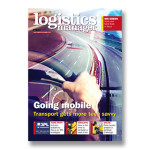There was a time when it was considered cutting edge for a parcels company to be able to track the parcels going through its network. That’s taken for granted now, and in future it seems, the really important thing will be to track the recipients.

That is just what DPD has the capacity to do with a new app. It describes the app as ‘ground-breaking’ and for once, that description might just be right. The app offers a range of functions that allow consumers to set their delivery preferences. The “ground-breaking” part is that it can use the geo-location information that smartphones provide to tell the driver when the app user returns home.
If a parcel couldn’t be successfully delivered earlier in the day, the driver can make another delivery before finishing the round. The app user is sent a notification to advise that the driver is returning with the parcel.

The biggest problem in home delivery is the fact that the recipient might not be there to accept the goods, so, tracking the consumer is a logical move. Inevitably, there will be those who are concerned that there is something big brother-ish about this. But, this is an entirely optional facility for the consumer. The consumer has to choose to download the app and to allow that information to be made available to the carrier. Consumers seem surprisingly happy to give this kind of information, so there is no reason why this app should not be a success.
The next question is, can you go any further with this? If your driver can see that the recipient for a package is sitting in the local Starbucks rather that waiting patiently at home, would it not make sense to make the drop there – if it is on the route?
There are clearly limits to what is viable – after all you can’t have delivery vans chasing consumers around the country. But if consumers are willing to be tracked, it could open the way to ever more innovative delivery services.
From 3PL to 3DL?
The development of 3D printing might have been seen as a threat by some in logistics, but why shouldn’t it become part of the portfolio of services offered by logistics providers? Instead of holding stocks of slow moving parts for distribution, why not offer a service to print and distribute the part? That appears to be the thinking at UPS, which is launching such a service in the US in co-operation with SAP and Fast Radius.
Its target markets include rapid prototyping, slow moving parts, and some short production run manufacturing. It reckons that some orders could be delivered the same day. Perhaps it’s time to think in terms of 3D Logistics rather than just 3P Logistics.






